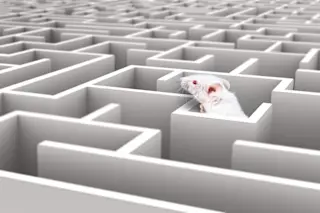By transplanting bits of quail embryos into chicken embryos, Evan Balaban of the Neurosciences Institute in San Diego this past year created chimeras that cheep like chickens but bob their heads like quail. Why? you ask. Balaban wants to know why different species with similar brain architecture behave in markedly different ways, even when the behavior—like birdsong—is at least in part hardwired rather than learned. Quail and chickens have virtually identical brains, but their songs differ. When a young chicken crows, it merely raises its head and squeaks. A quail has more flair: its call is divided into three parts, the last a musical tremolo, and while it sings its head bobs as much as 20 times a second. How did evolution accomplish the change from one to the other? Balaban asks.
He began to study the quail neural tube, the part of the embryo that develops into the nervous system, in the mid-1980s. I wanted to see, he explains, if there were any populations of cells I could transplant that already knew the difference between chicken and quail. In 1988 Balaban discovered that the midbrain knows the difference between crowing styles. By transplanting midbrain cells, he could make chickens sing like quail. They still couldn’t manage that little warble at the end, however—probably because they still held their heads high and steady.
Last March, Balaban reported how to make chickens bob their heads: just give them a quail’s caudal brain stem, a cluster of neurons right above the spinal cord. Soon, by transplanting both caudal brain stem and midbrain cells, he thinks he will create chickens that can do it all—the three-part quail song with the head-bobbing warble. And that, he believes, is how evolution differentiated the two species—not by attacking, in one fell swoop as it were, a single higher brain center that compiles and organizes the impulses of lower brain components but by making independent changes to the lower components themselves. Maybe the higher parts of the brain, Balaban speculates, are much more similar among different species than we appreciate right now. And what is very different about them are the lower parts.














